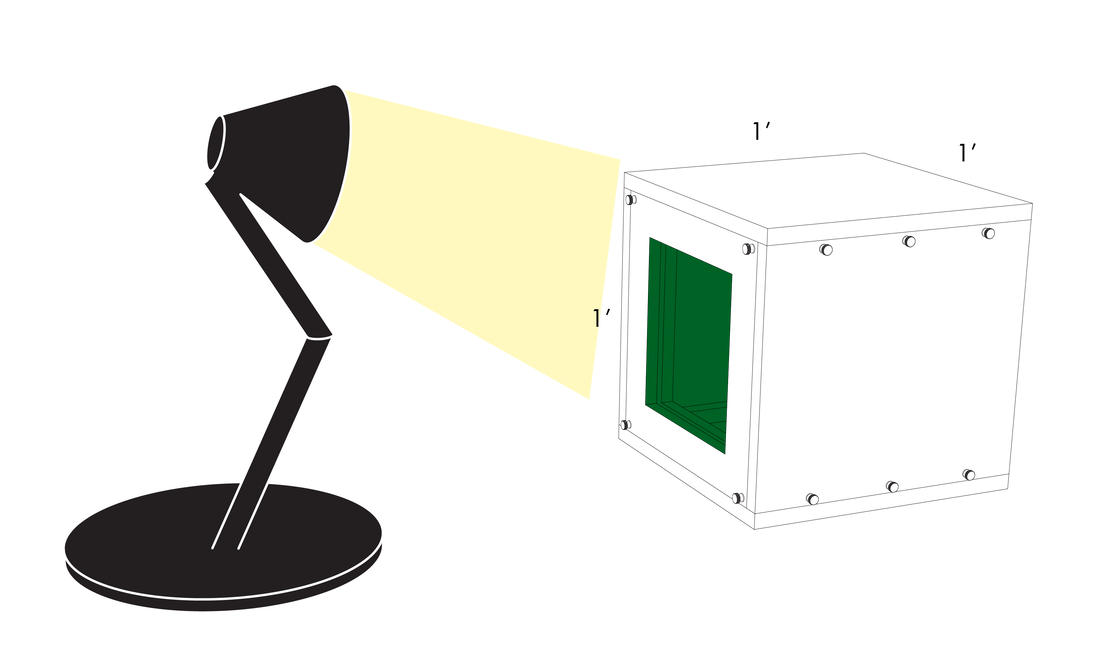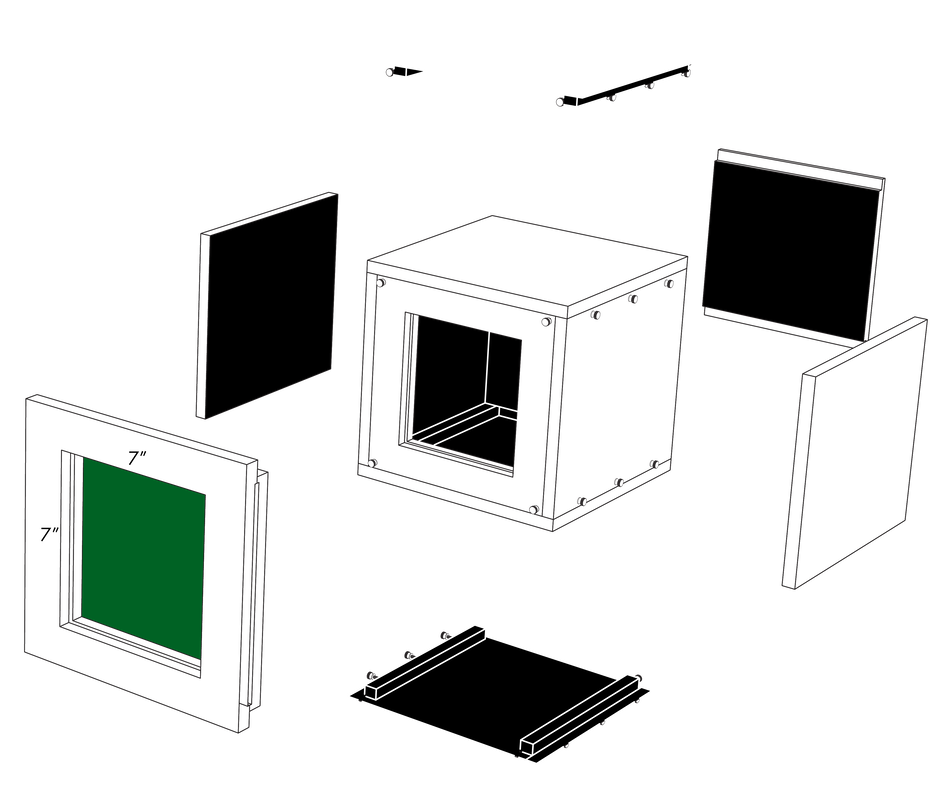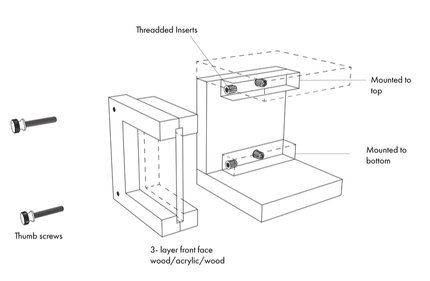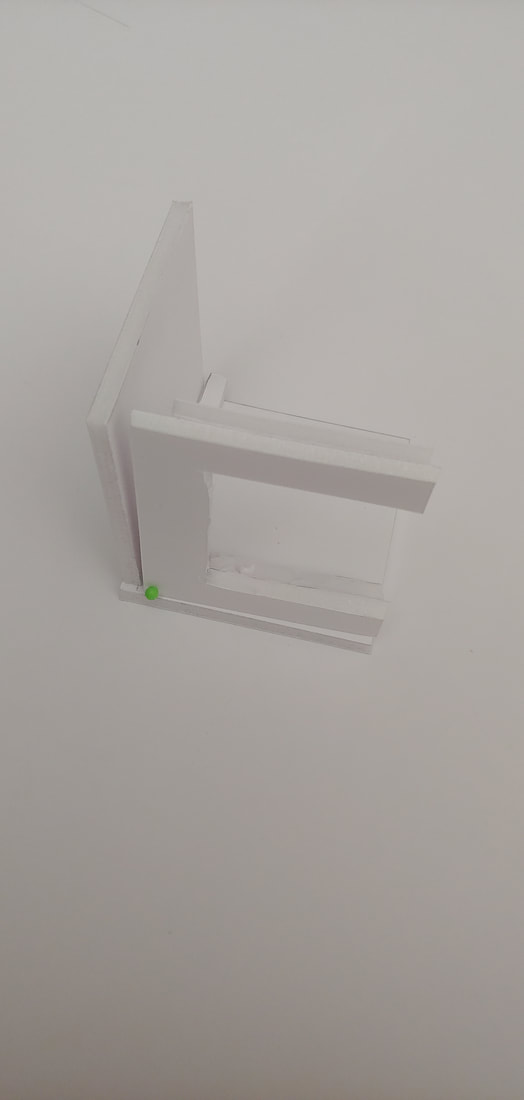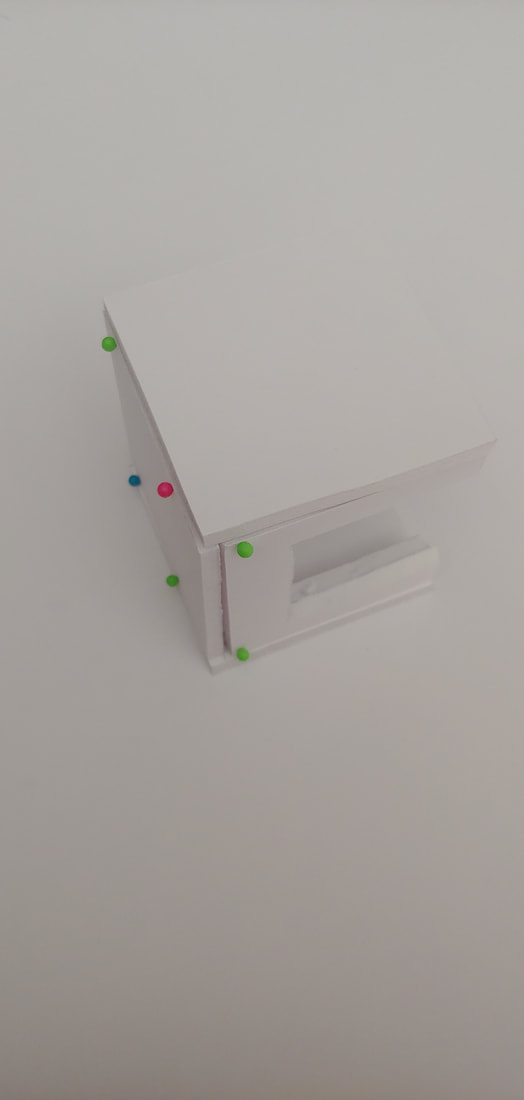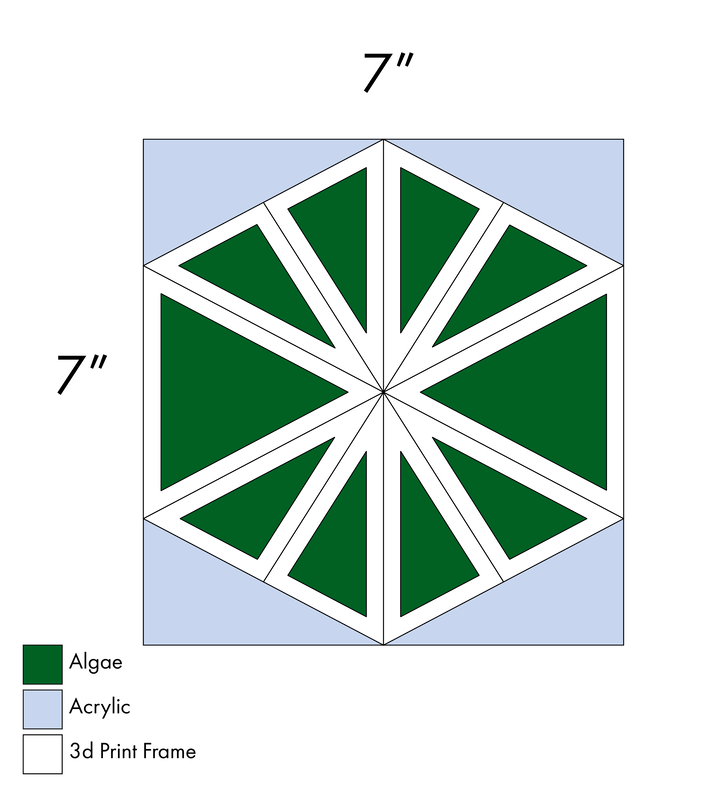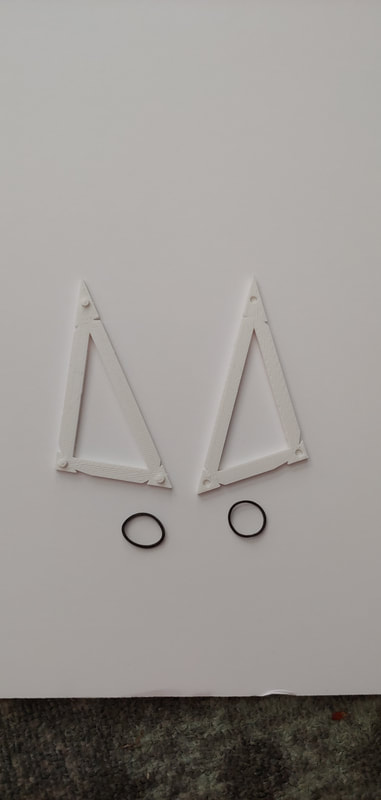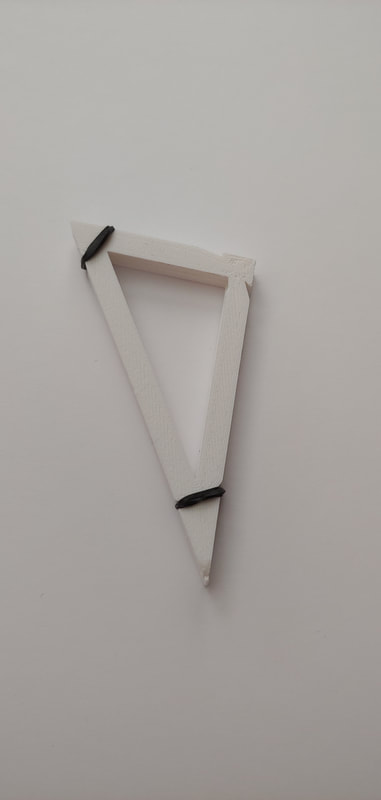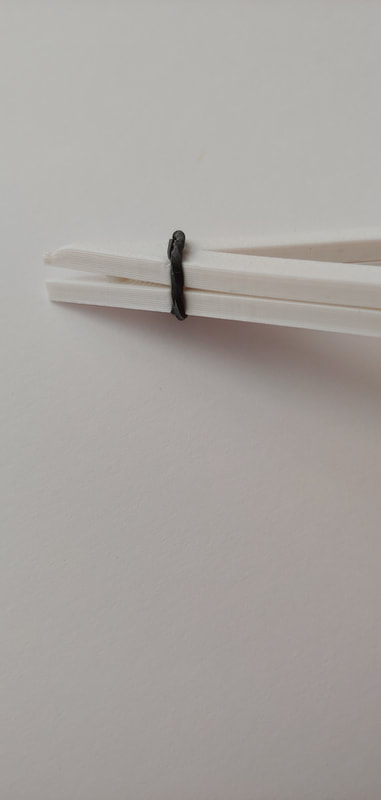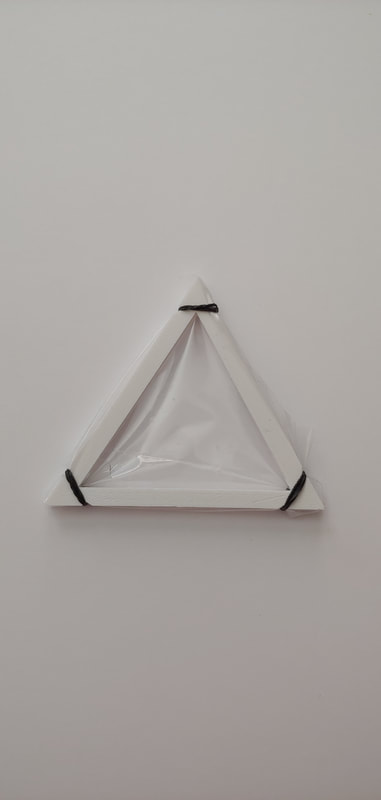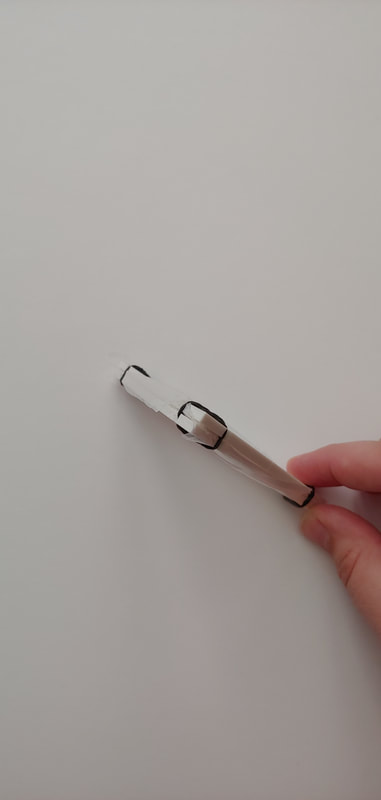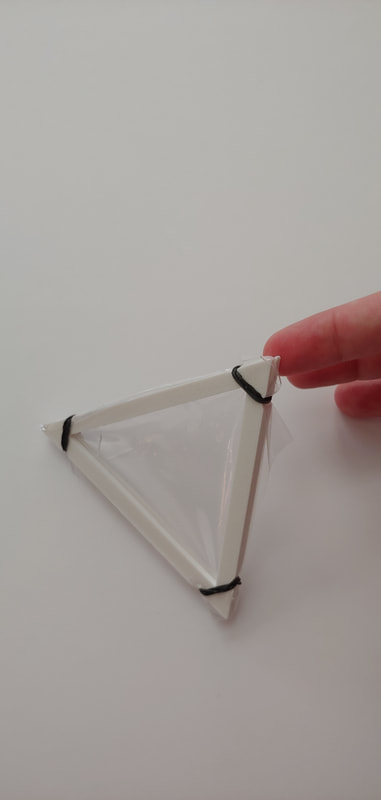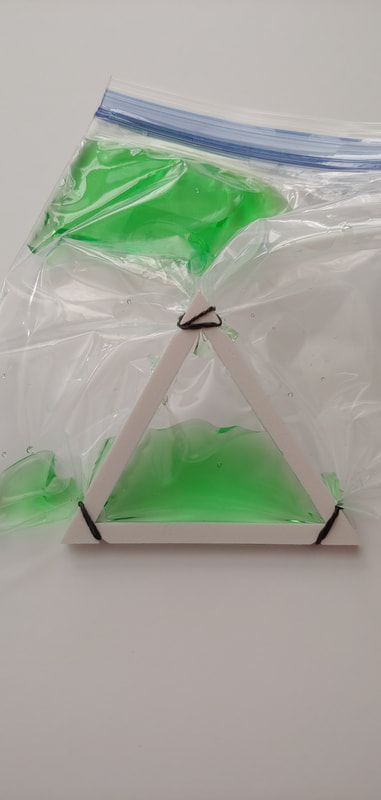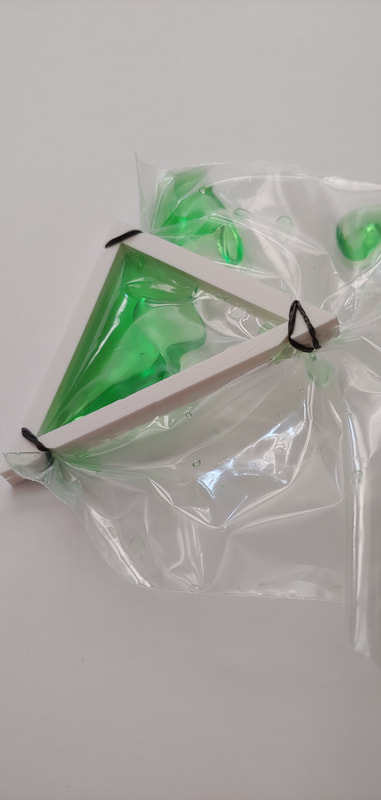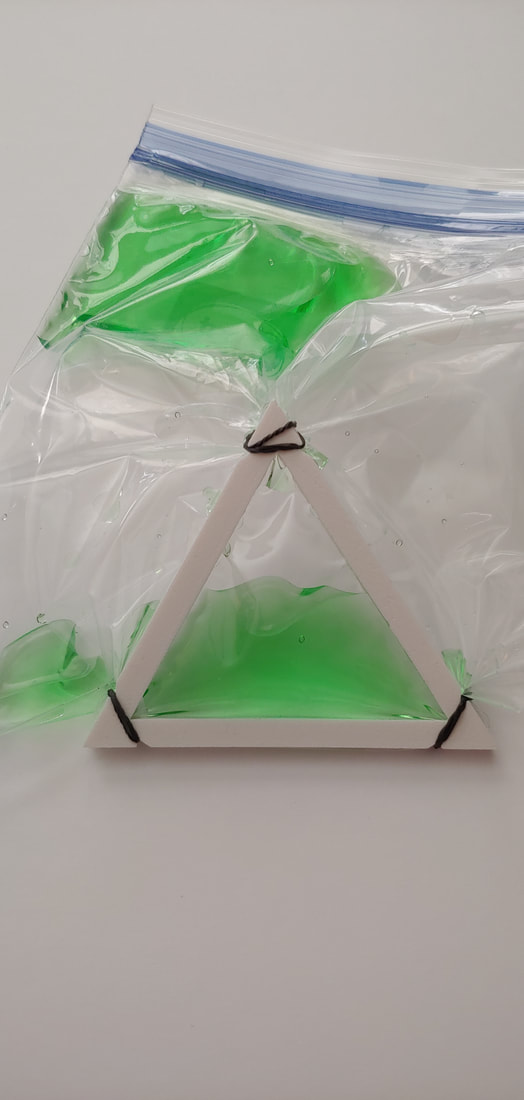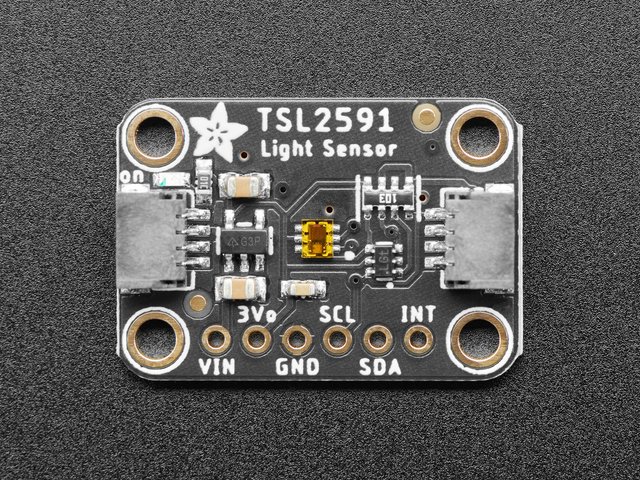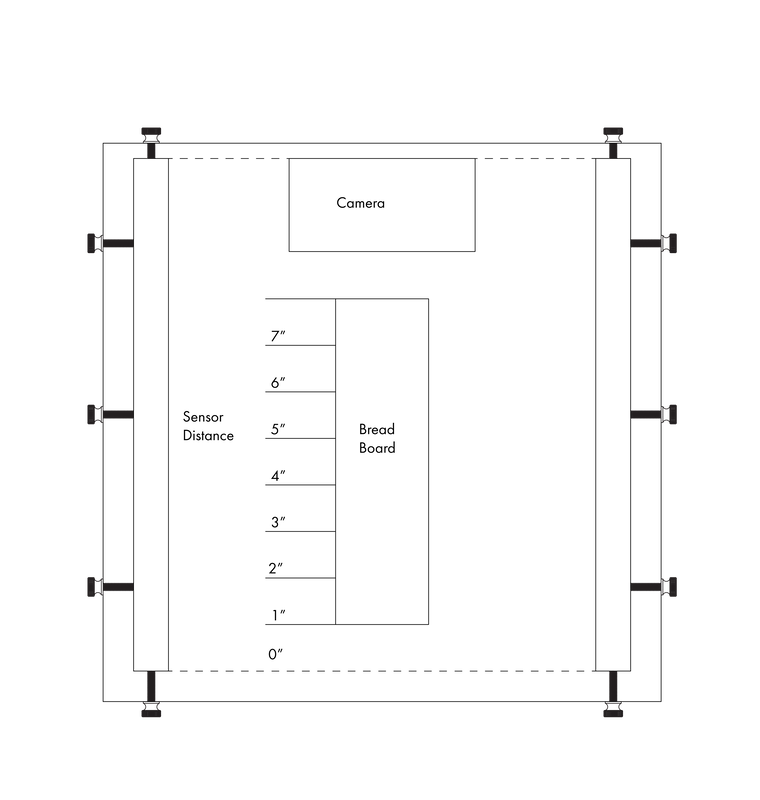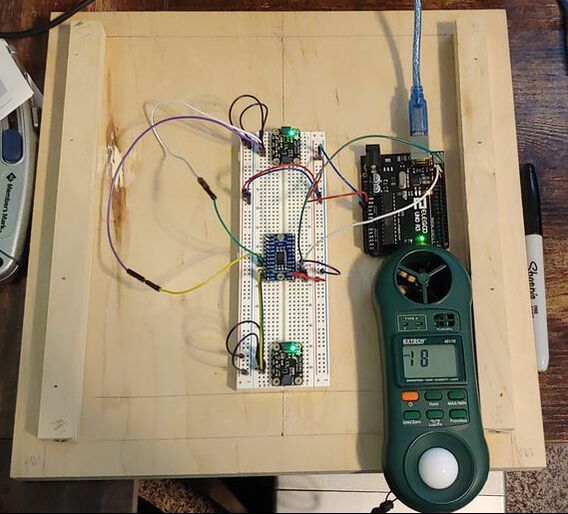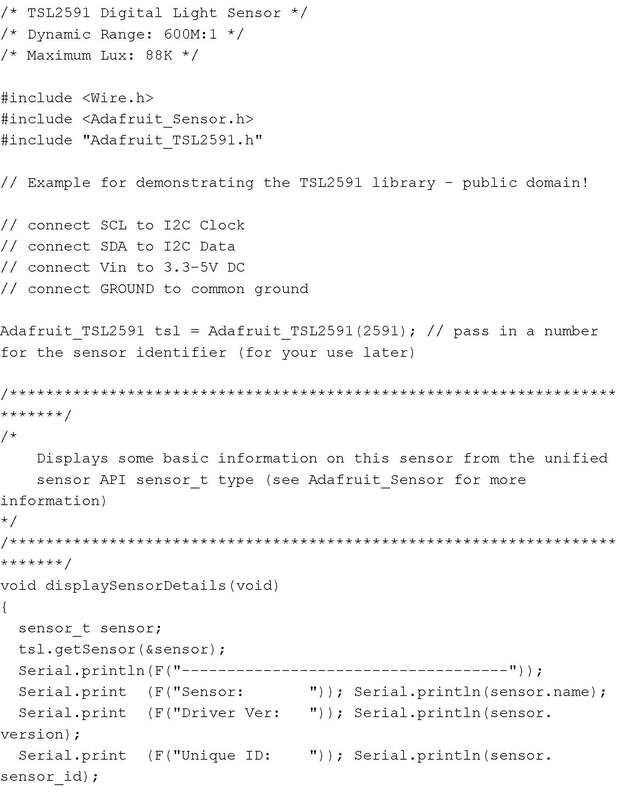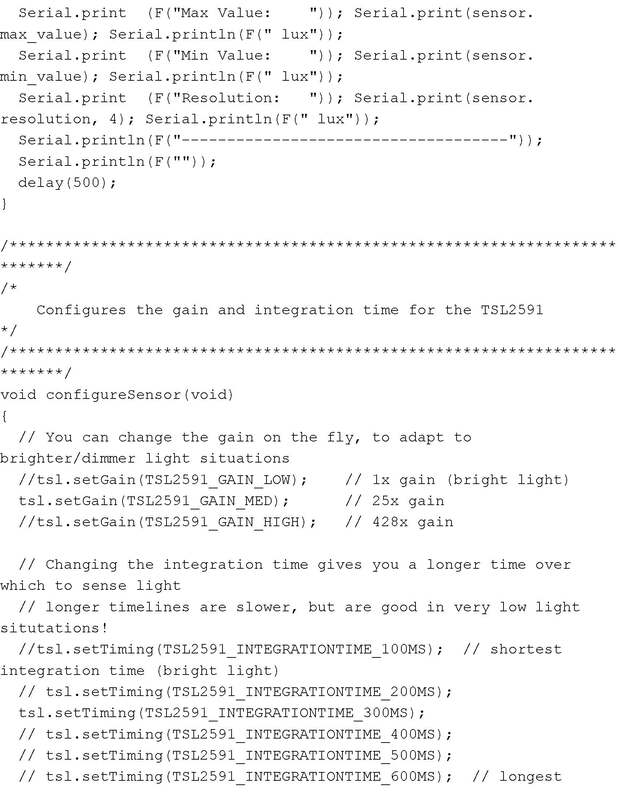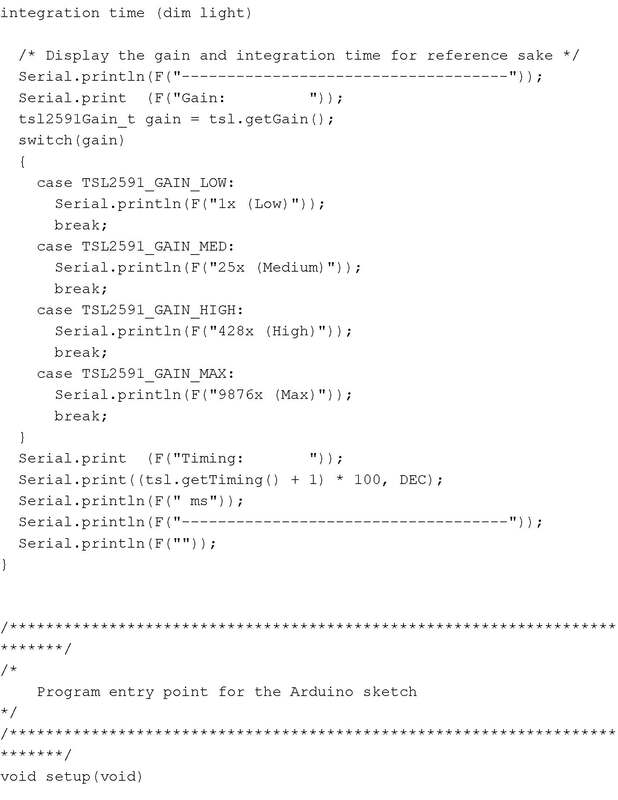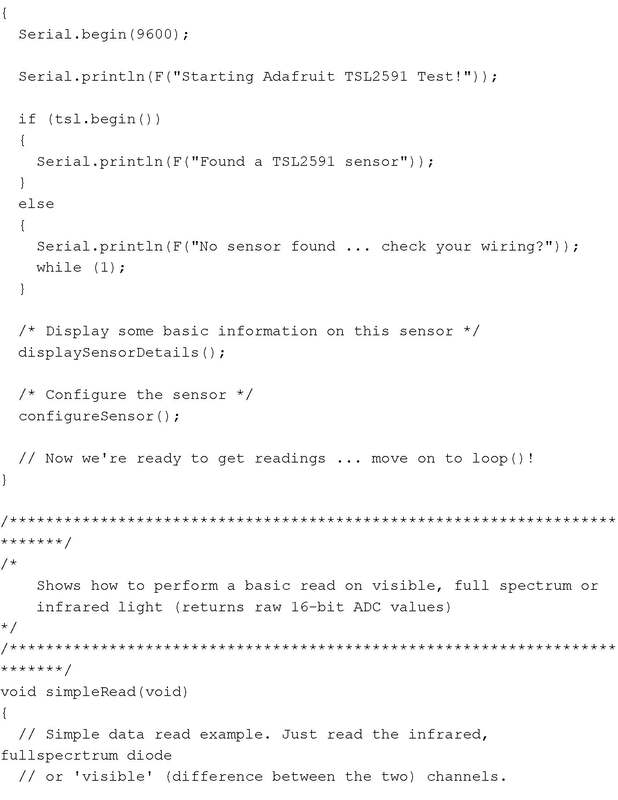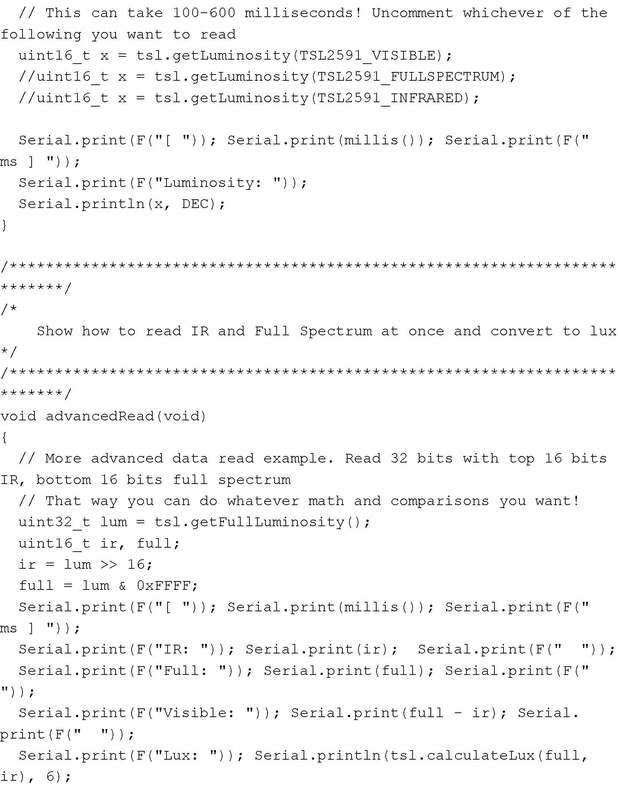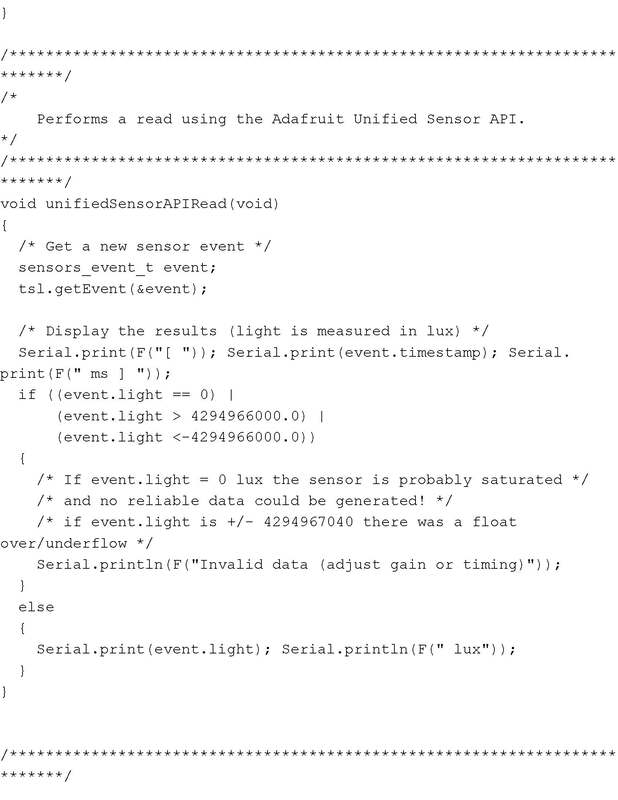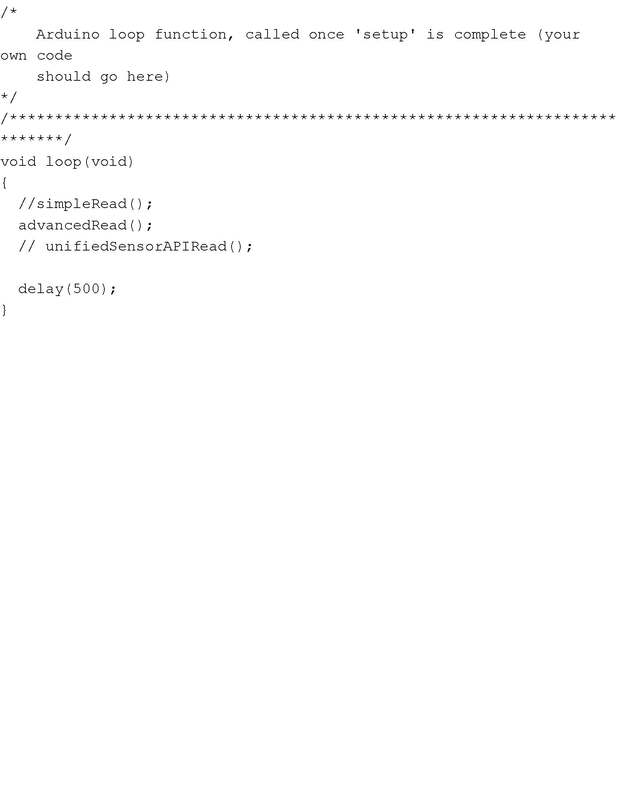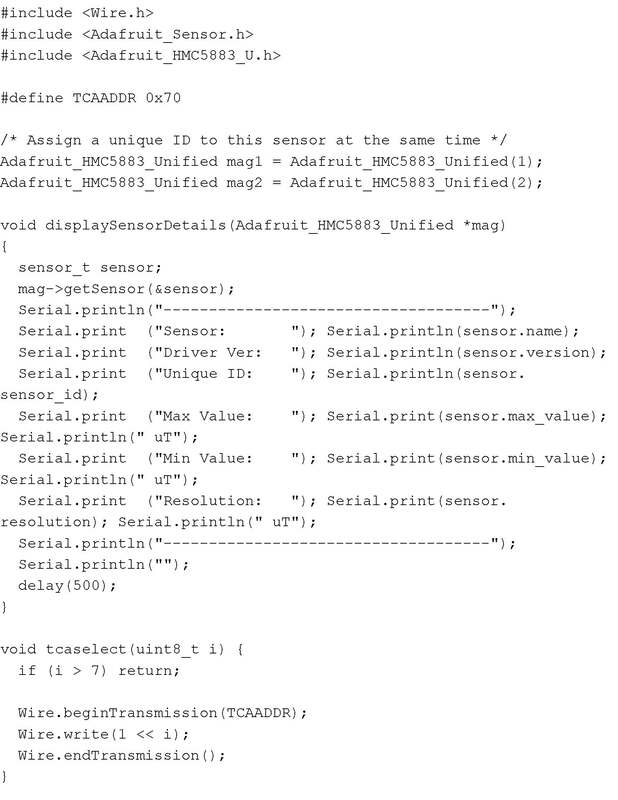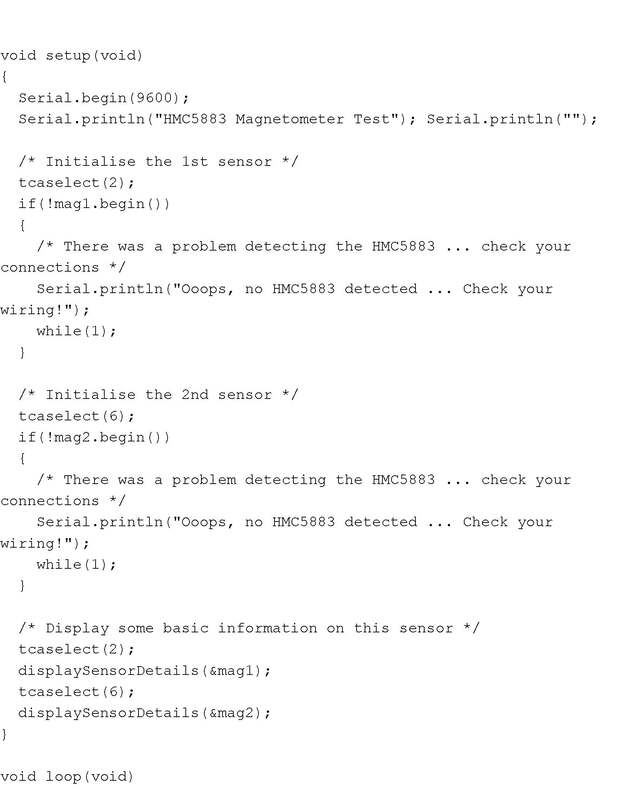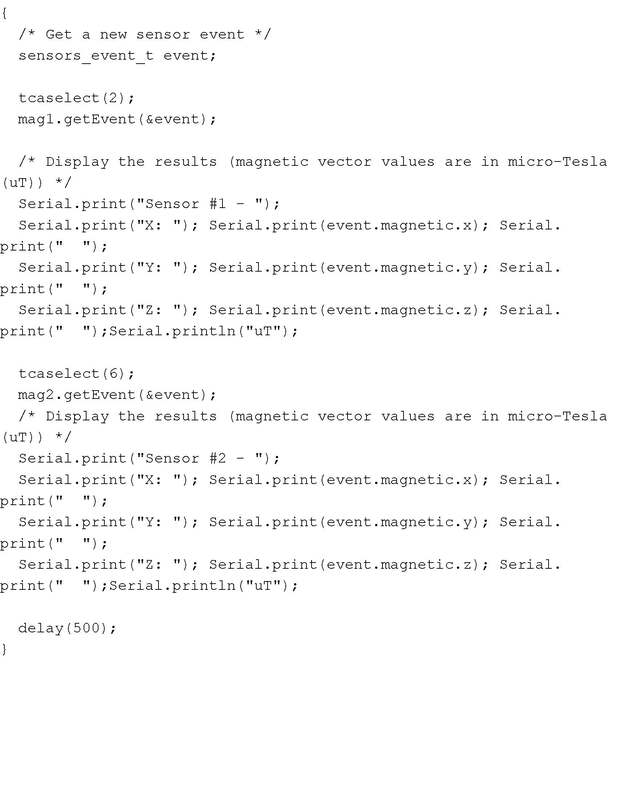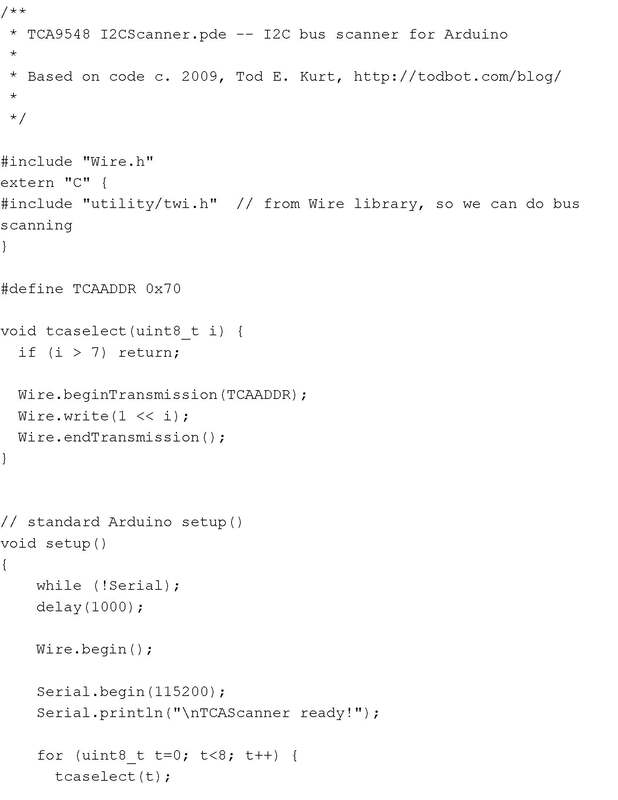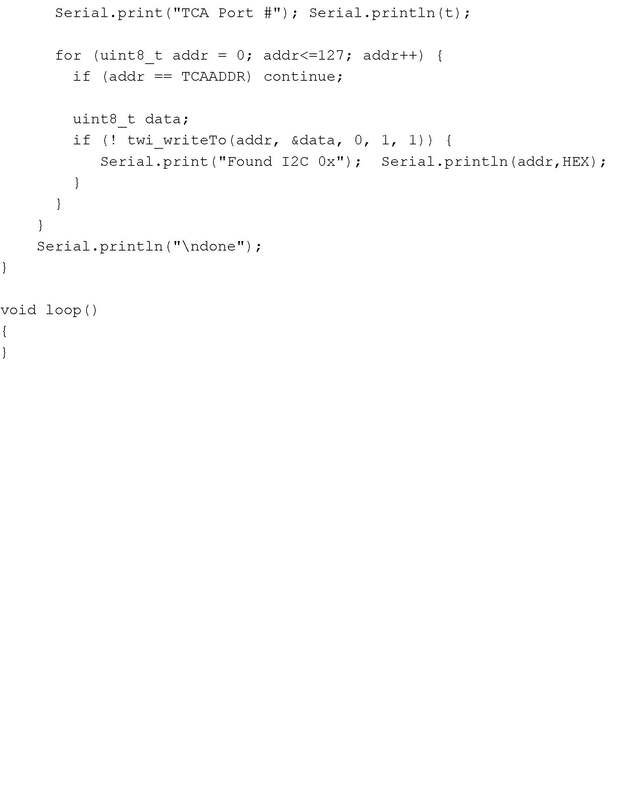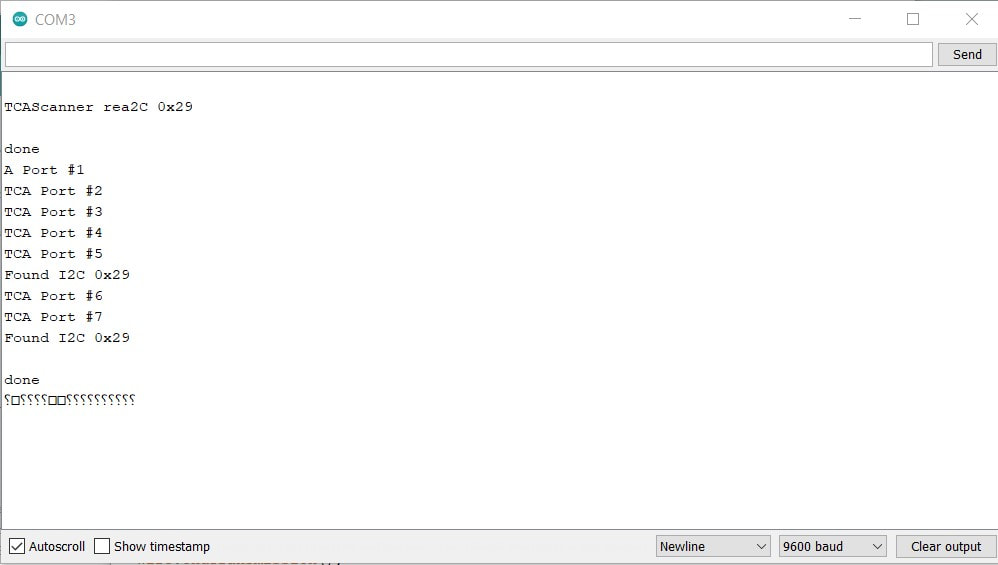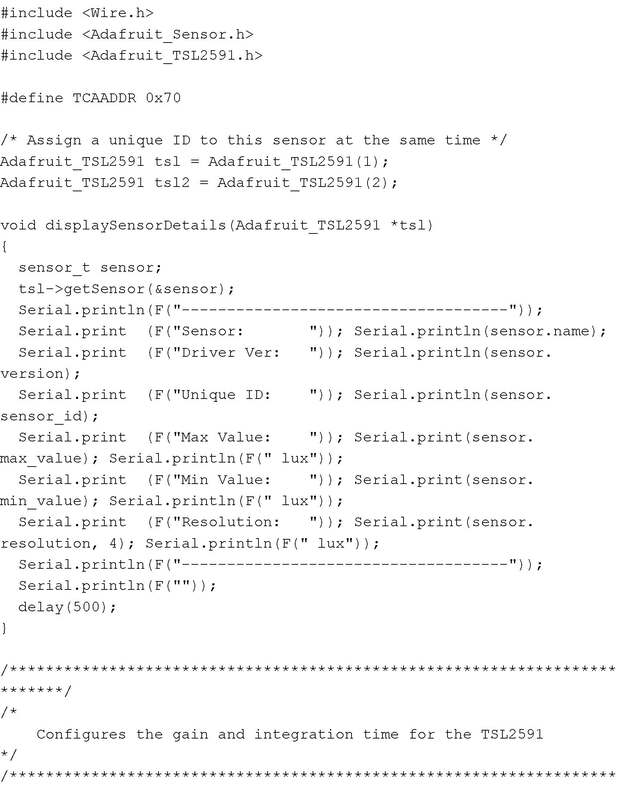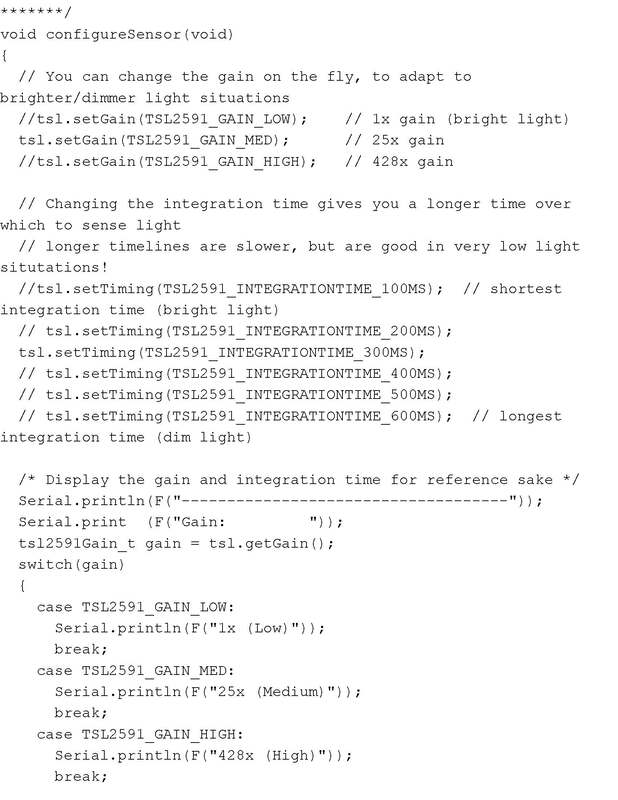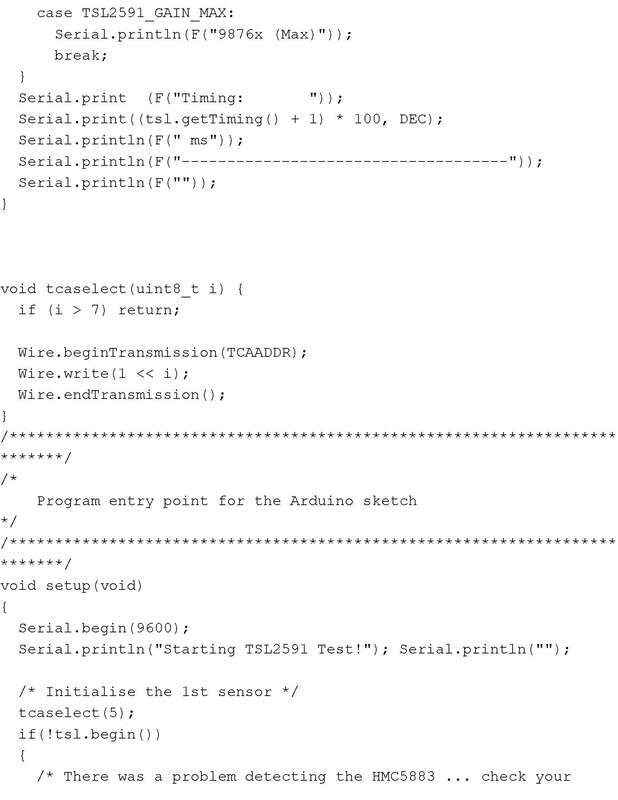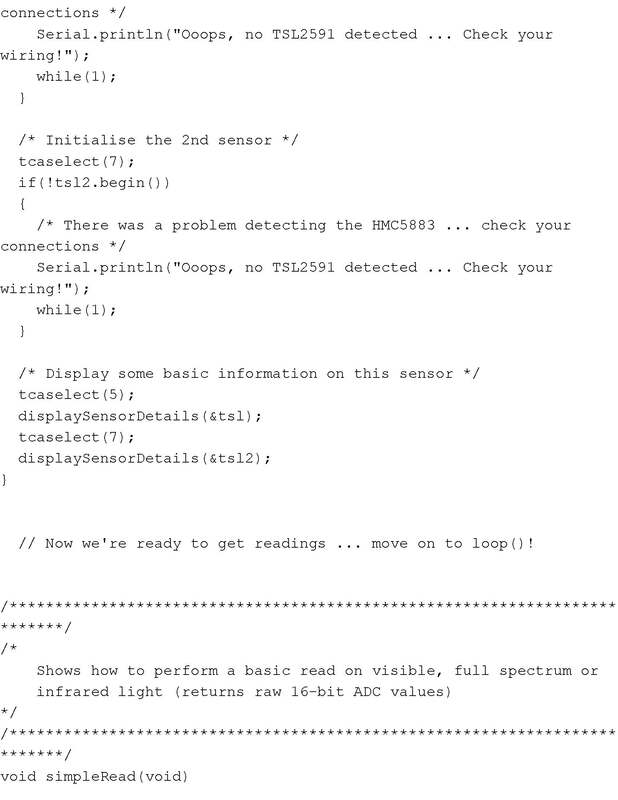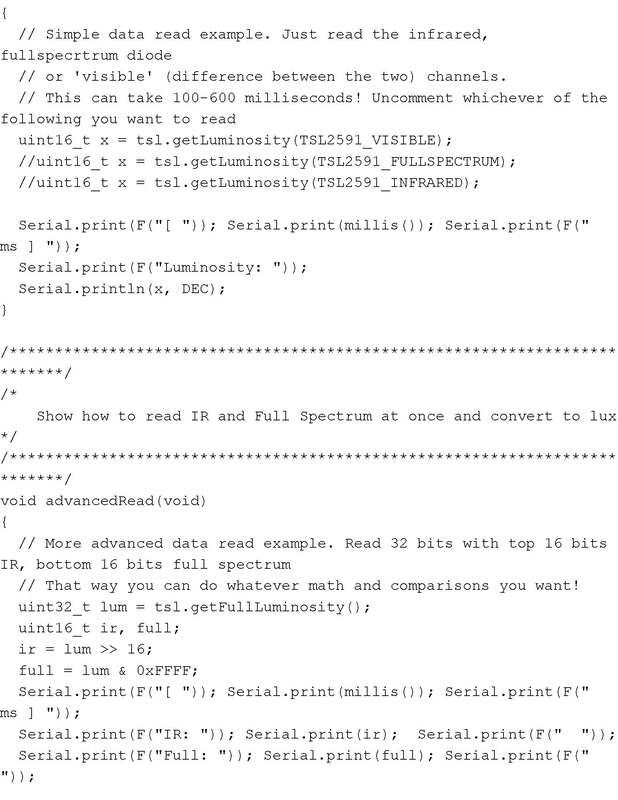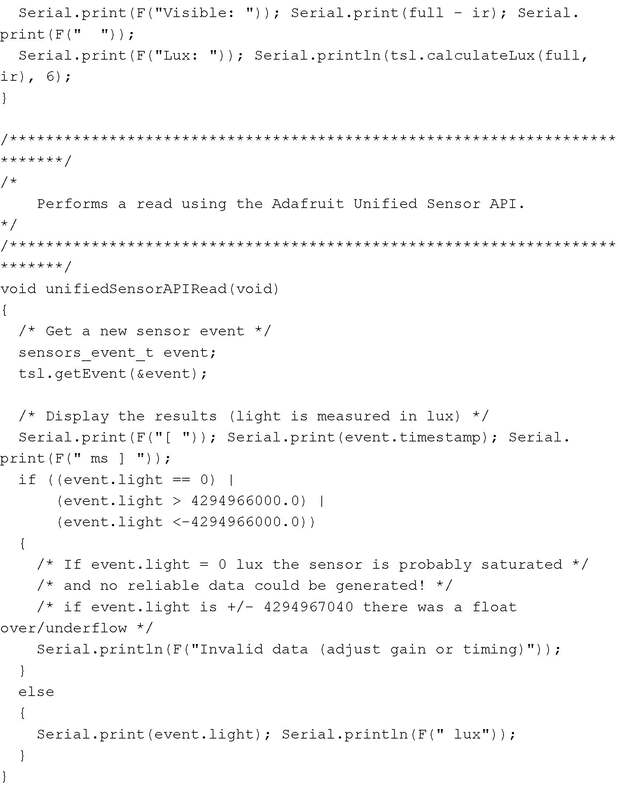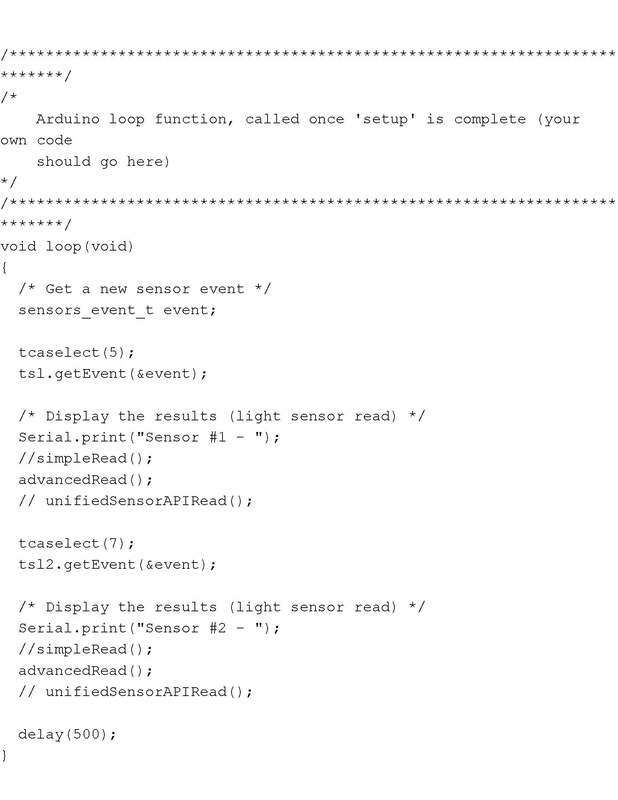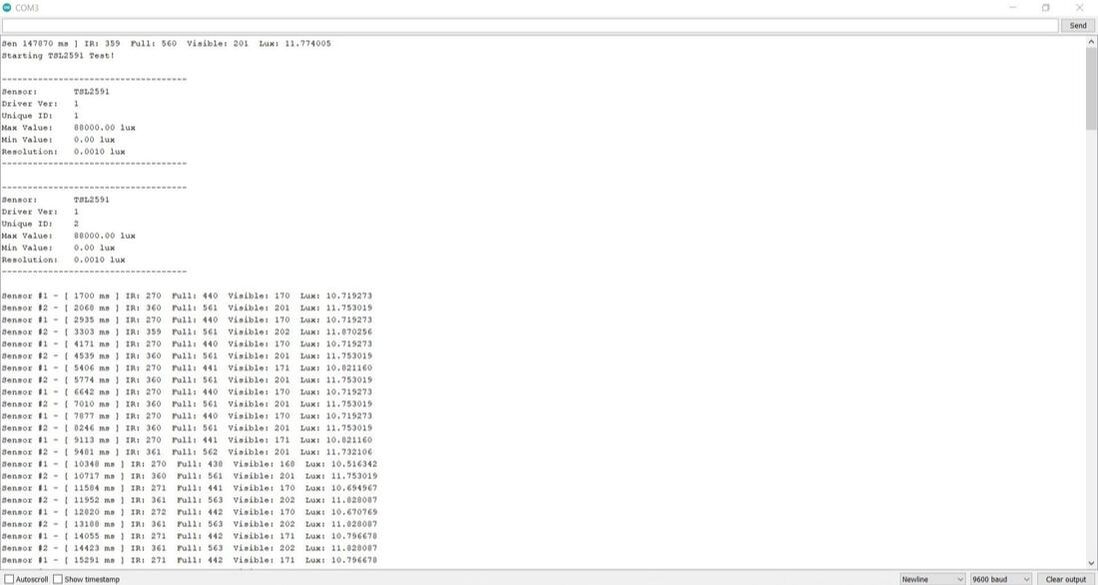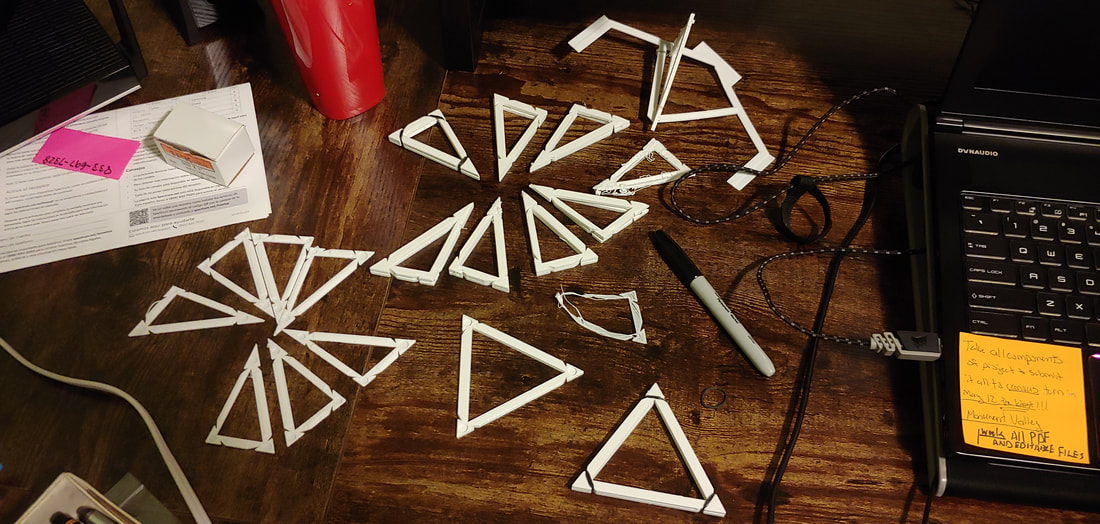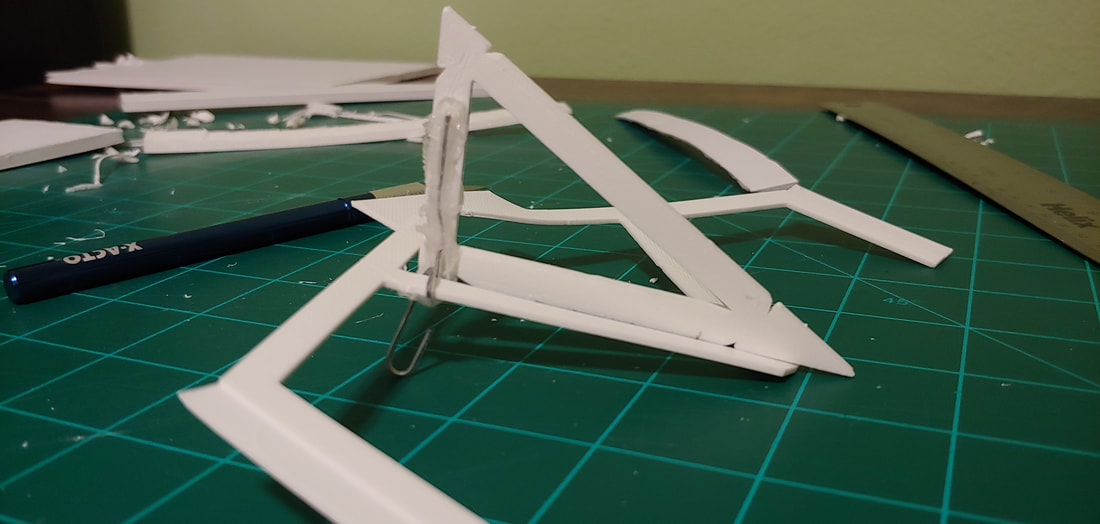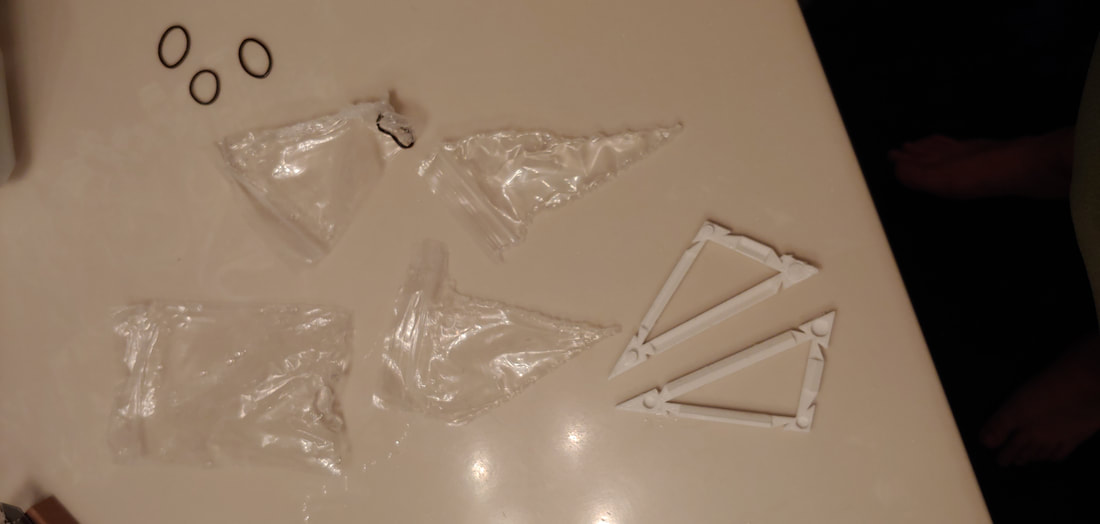Enclosure Design
Box is a 1' by 1' by 1' assembly box. Box has capability of being torn apart and put back together. This allows for modifications to the tests to happen as needed and without the worry of gapping from loose form fitting lids.
Mock-ups Box
Final box materials are wood, acrylic, and put together by thumb screws
First Box Mock-Up made from Foam core and push pins.
Mock-Ups Algae Panel
Algae Panels are made from 3D printed forms. They then sandwich smaller bags filled with the algae to hold in place for the experiment.
First Algae Panel Mock-ups
Controls (electronics)
Arduino Kit with TSL291 light sensor (x2)
Arduino Code for this project required a hybrid of code. The TSL291 light sensor needed a another sensor in-between them to talk to the computer. These sensors share the same name code in the computer, meaning that it could only read one of them at a time. In order to read both sensors at the 1 inch mark and the 7 inch mark at the same time with each other a multiplexer (TCA 9548A) sensor needed to be inserted into the equation. This sensor allows the TSL291's to each have it's own name, and can carry up to 8 of these sensors that have the same issue.
However, because it is an addition the code of the TSL291's given by adafruit need to be modified in order to run the system. The TCA9548A needs to have the opportunity to identify the sensor names to the computer first, then the light code can be run.
However, because it is an addition the code of the TSL291's given by adafruit need to be modified in order to run the system. The TCA9548A needs to have the opportunity to identify the sensor names to the computer first, then the light code can be run.
TSL291 Base Script from AdafruitPart 1 of base for hybrid script, elements needed to make hybrid script work came from here.
TCA9548A Sample Script with multiple sensorsPart 2 of base for hybrid script, elements needed to make hybrid script work came from here.
|
TCA9548A ScriptThis script must be run first, before the hybrid script or else the computer will not recognize the TSL291 sensors
TSL291 and TCA9548A Script CombinedHybrid Script used to collect the data for the project. This is the second script that has to be run after the one above or the computer will not read the TSL2591 sensors!
|
Parts & Pieces
This project initially required a lot of 3d-prints. The goal was to make an operable window panel for the algae to reside in that was a design created for a studio project. The design was meant to be placed on a greenhouse, but from scope of work and manufacturing issues the project needed to be reduced down in size. Please see methodology for more information.
